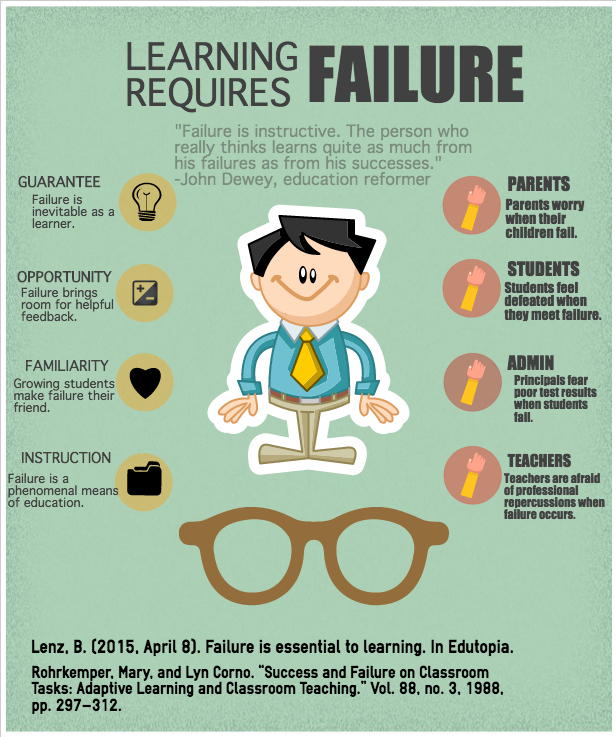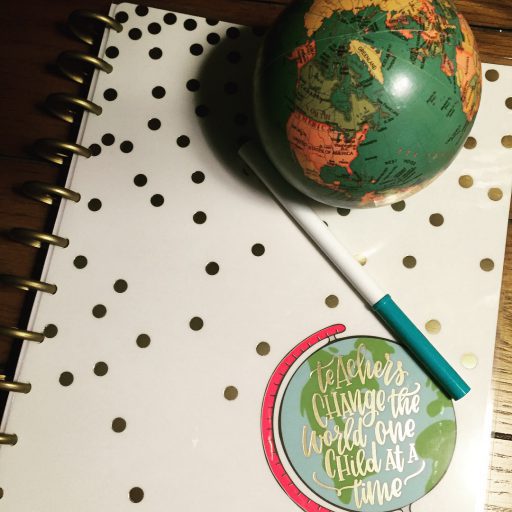I watched the movie Queen of Katwe last week which tells the true story of a girl, Phiona, from Ugandan slums who becomes a world-renowned chess champion. While she wins with ease against other children in her neighborhood, Phiona’s coach tries to convince her to enter a larger scale, more difficult tournament.
Robert Katende (Phiona’s coach): “You must play at Rwabushenyi. It is the premiere tournament in their country. You will be playing international masters… or do you fear losing?”
Phiona: “Losing teaches me how to play better. I will play.” (Nair, Wheeler, & Crothers, 2016)
Teachers, would our students respond like Phiona? Would they play on, fully embracing the likelihood of failure? We know in our hearts that failing can create endless opportunities for learning, but do we convey this on a daily basis in our classrooms?
Three of my classmates and I set out to explore the topic of failure’s place in classrooms more deeply.

With failure’s benefits in mind (and above on the left 🙂 ), we thought about the concept from a variety of perspectives (see above right). What concerns might arise as failures become more of an honored celebration? What’s stopping teachers and school communities from saying, “Oh, that’s okay; want to learn from your mistakes and try again?”
How can we make failure as powerful a learning tool as success?
We wanted to allow authentic teaching voices from around the country into the conversation by way of a survey. We received over 100 responses ranging from urban teachers in Colorado to rural area teachers in Mount Pleasant, MI.
Their answers were fascinating in more ways than I can count, but for the purpose of this blog post space, I would like to focus most centrally on one common theme: the presence and support of peers.

As presented in the above graph, most teachers surveyed that their students were comfortable with taking risks in the classroom. This is reassuring, right? We pat ourselves on the educator back for fostering such a wonderfully risk-taking environment!
Not so fast. The next graph tells a bit of a different story.

Even though students are comfortable taking risks, teachers report that students are not comfortable failing around their peers.
Perhaps, then, students are comfortable taking risks on an independent basis but do not want to experience failure around friends and classmates. This certainly limits failure’s potential as a learning tool if students are frightened to allow it in the first place. I began to look into what researchers had to say on the topic.
Developmental psychologist Marilyn Price-Mitchell, PhD. suggests that in order for instances of resilience to occur regularly within a classroom, teachers must “create a classroom culture where failure, setbacks, and disappointment are an expected and honored part of learning” (2015).
How exactly this classroom culture is created depends on classroom context. Kindergarteners will not learn to celebrate failure using the same approach as a tenth grader learning Algebra.
Personally, as a third grade teacher, I plan to spend our first few community sessions discussing some notable people who once met with great difficulty. We may discuss J.K Rowling, for instance, who was out of a work with little funds when she wrote Harry Potter. I will ask questions like, “How do you think Ms. Rowling was feeling at first? What do you think made her keep going?”
I think sometimes kids have the idea that the adults they view as successful had golden opportunities plopped down on their laps. I hope that speaking more honestly about my own failures as well as those of others could be a huge step towards a failure-honoring classroom culture.
My teammates and I collected fascinating information about failure’s classroom role and compiled it into a BlendSpace. Feel free to check it out below if you, too, have a desire to maximize failure’s potential in the classroom.
I’d like to think we’d made Phiona proud.

References:
Nair, M. (Director). Wheeler, W., & Crothers, T. (Writer). (2016). Queen of Katwe [Motion picture]. USA: Disney.
Price-Mitchell, M. (2015, May 20). Does your classroom cultivate student resilience?. In Edutopia.
